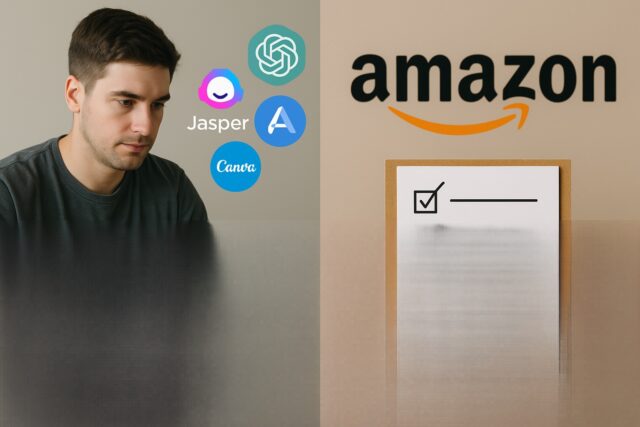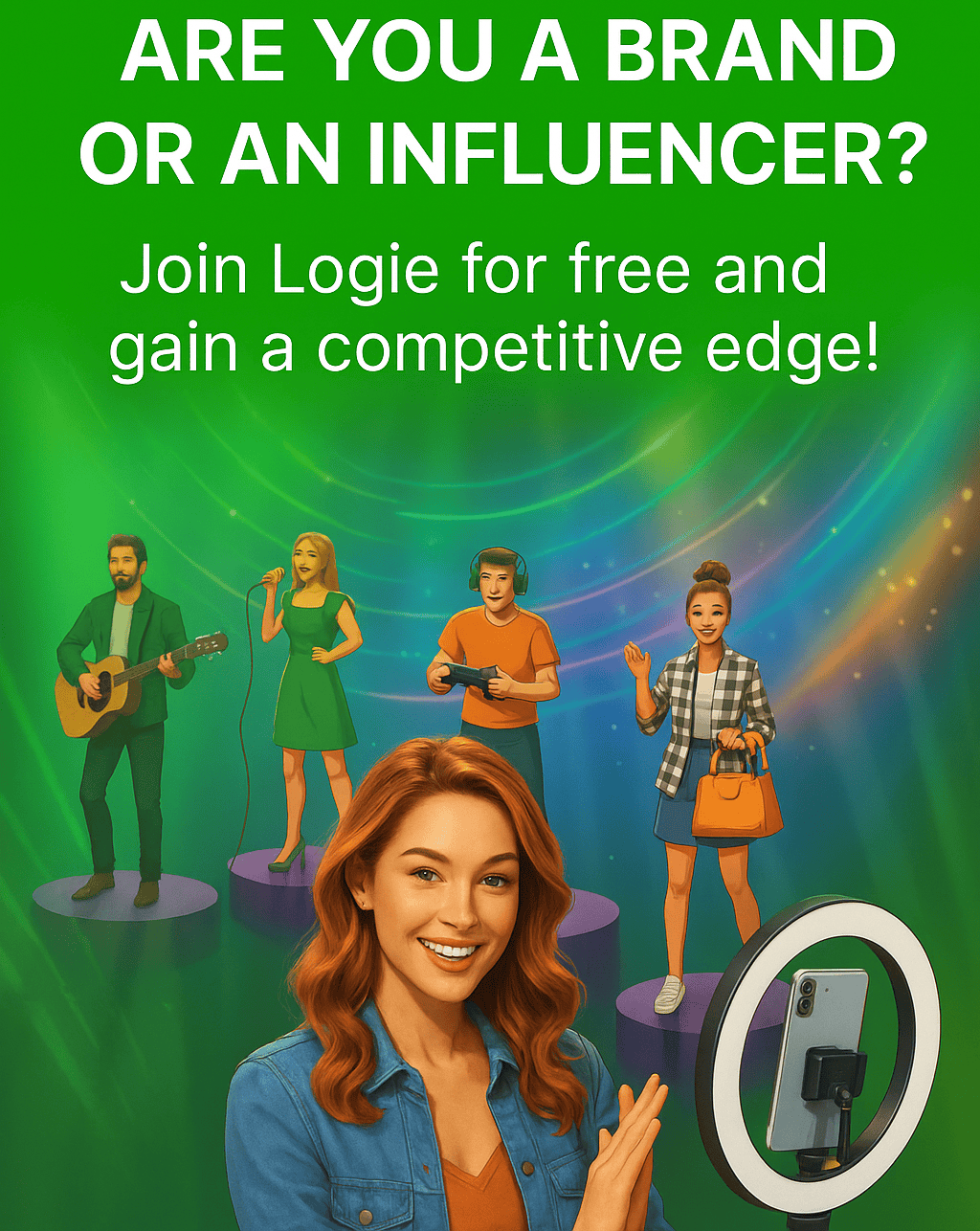Artificial Intelligence is part of how creators work. From writing captions to building storefronts, AI tools are now woven into nearly every step of content creation.
If you’re part of the Amazon Associates or Influencer Program, you’ve probably used ChatGPT, Jasper, or even Canva’s Magic Write to brainstorm ideas, outline scripts, or polish your copy.
But here’s the problem: Amazon’s policies on AI are evolving fast, and the line between “smart assistance” and “policy violation” isn’t always clear.
By the way, if you want to stay connected and know everything about social commerce and never miss a beat, join Logie today! Click here
So, what’s safe to do? What could get you flagged or even banned? And how do you actually blend AI into your creative process without crossing the line?
Let’s walk through everything you need to know step by step.
1. What Amazon Says About AI in 2025
Amazon’s 2025 guidelines don’t ban AI, but they do draw some firm boundaries.
The short version looks like this:
- AI that helps you create, brainstorm, or optimize content is fine.
- AI that touches or uses Amazon’s data directly, like product feeds, APIs, or listings, is not.
“If you’re using AI to brainstorm, write first drafts, or generate creative ideas, Amazon doesn’t prohibit it – as long as you’re not pushing data back in or scraping.” Ileane Smith

In Amazon’s updated Participation Requirements, they clearly state that “Program Content and Special Links should not be used in connection with generative AI or machine learning models.”
What does that mean in practice?
You can use AI to think with you, but not to feel for Amazon.
You can’t train AI models on Amazon product data, and you definitely can’t use automation that interacts with Amazon’s Product Advertising API.
“You have to be clear: you can’t use Amazon’s API data to fine-tune your own AI models.” Liz Dean
In short: AI can inspire you, but it can’t plug into Amazon’s systems.
2. The “Green Light” Zone AI You Can Safely Use
Let’s start with the fun part, the things you can keep doing without worry.
AI for Writing, Editing, and Brainstorming
You’re perfectly safe using ChatGPT, Jasper, Claude, or Bard to:
- Draft or rewrite your own blog posts and product guides
- Create scripts for shoppable videos or Amazon Lives
- Generate catchy titles or social captions
- Edit grammar, tone, or formatting
These tools make you faster, not dishonest. Just make sure you still shape the story. AI can draft, but it shouldn’t decide what’s true.
AI for Visuals
Midjourney, DALL·E, and Canva are all great for creative images, infographics, or promotional banners.
Just don’t generate fake product photos or misleading representations. Your visuals should support your content, not fool your viewers.
AI for Optimization
SEO tools like SurferSEO, Notion AI, or Frase are safe too. They don’t touch Amazon’s backend; they help you write smarter, structure better, and target search intent.
Bottom line: If the AI works with your words, your ideas, and public data, it’s fair game.

3. The “Red Light” Zone: Things That Will Get You in Trouble
Now, for the part creators, sometimes they miss what not to do. These are the behaviors that can get your account suspended or permanently closed.
No Amazon API + AI Combos
Amazon’s Product Advertising API (PA API) is strictly off-limits for automation.
That means:
- No bots that generate product listings automatically
- No tools that scrape product data for AI to rewrite
- No auto-generated “Top 10 Deals” lists powered by API feeds
It might sound smart, but Amazon sees it as automated misuse of its ecosystem.
Don’t Train AI on Amazon Data
Never feed Amazon product titles, reviews, or listings into a model, or use Amazon content to fine-tune an AI system. That’s considered training on proprietary data, and it violates their terms.
No Auto-Scraping or Price Updating
If a plugin or script automatically pulls in pricing, availability, or review data from Amazon, it’s a red flag.
Manual research? Fine. Automated scraping? Not fine.
Even if the tool claims it’s compliant, proceed with extreme caution.
4. The “Gray Area” What’s Still a Little Fuzzy
There are some cases that Amazon hasn’t spelled out clearly yet, but here’s how to interpret them safely.
Copying Amazon Descriptions into AI
If you paste Amazon’s product description into ChatGPT and ask it to rewrite it, you’re technically “using Program Content with generative AI.”That’s risky.
Instead, take your own notes, summarize what’s relevant, and then use AI to help you rephrase or expand those notes.
Using Browser Extensions
Some extensions just help you grab your own affiliate links faster. Those are fine. But if a tool starts auto-inserting products, scraping listings, or mass-generating content, it’s a no-go.
Chatbots That Recommend Amazon Products
If your chatbot is trained on your own content, like your reviews or guides, and links back to your posts, you’re safe.
If it reads Amazon’s data directly or pulls in live product info, you’re walking into dangerous territory.
5. A Safe AI Workflow
Here’s a simple way to keep your process creative and compliant.
Step 1: Research the Human Way
Visit Amazon manually. Compare products. Take notes in your own words about what matters, features, use cases, and real impressions.
Step 2: Use AI as Your Creative Partner
Feed your notes into an AI tool and ask it to:
- Organize your thoughts
- Draft your intro or outro
- Suggest title options
Let AI accelerate your workflow, not automate your research.
Step 3: Add the Human Layer
Fact-check everything. Add your personality, voice, and experience. Readers follow you for your taste, not an AI’s summaries.
Step 4: Use Official Tools for Links
Always use Amazon’s SiteStripe or your Associates dashboard to generate links. If any tool says “auto-link your content,” don’t trust it.
Step 5: Repurpose with AI
Once your core content is ready, use AI to:
- Create snippets for social posts
- Write email teasers
- Draft YouTube descriptions
That’s an innovative and totally compliant use of automation.

6. How to Vet Any AI Tool Before Using It
Here’s your quick gut check:
Ask these five questions:
- Does it scrape Amazon data or automate API calls?
- Does it “train” on Amazon listings or review text?
- Does it publish content automatically without me reviewing it?
- Is it transparent about where its data comes from?
- Would I be comfortable explaining this workflow to Amazon support?
If the answer to any of these is “no” or “not sure,” don’t use it.
7. The Future of AI + Amazon
Amazon itself is integrating AI tools, especially for sellers and advertisers.
That’s a sign of where the world is headed: AI isn’t the enemy; misuse is.
Expect to see:
- Stricter wording around AI in affiliate programs
- New AI-powered dashboards for content and analytics
- More transparent policies (and maybe automated enforcement)
The key is to stay flexible. If you treat AI as a creative sidekick, not a shortcut into Amazon’s data, you’ll always be safe.
Conclusion
Here’s the bottom line:
- Use AI to create, not to cheat.
- Let AI help you, but don’t let it replace you.
- Stay human, stay curious, and remain compliant.
The creators who thrive in 2025 won’t be the ones using the most AI; they’ll be the ones using it wisely.
Keep experimenting, keep learning, and remember: Your originality is the one thing AI can’t automate.











